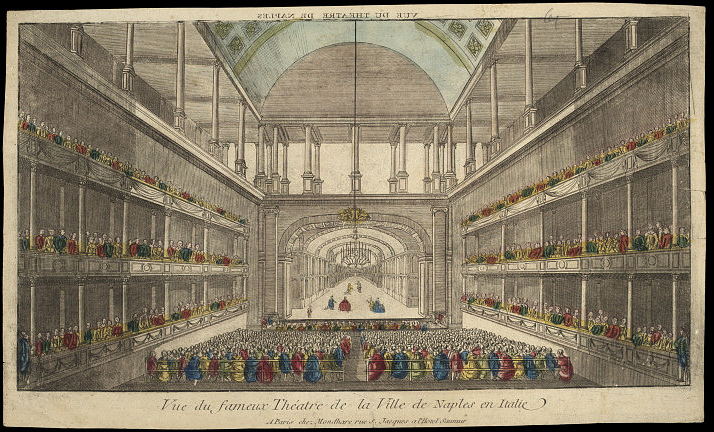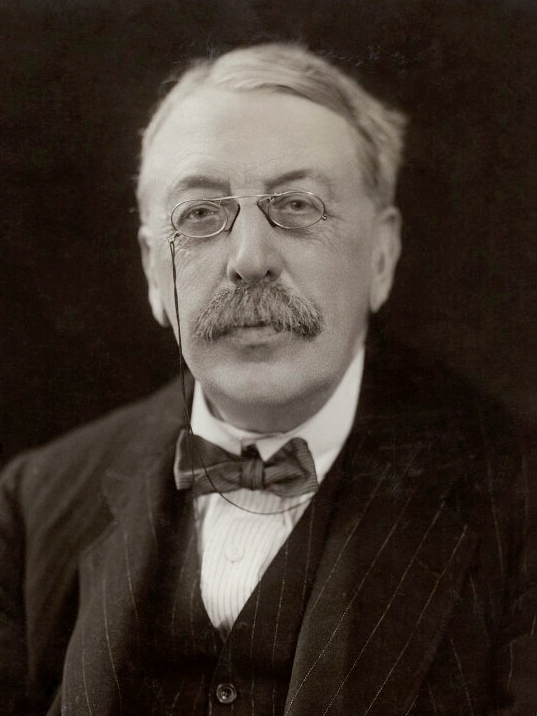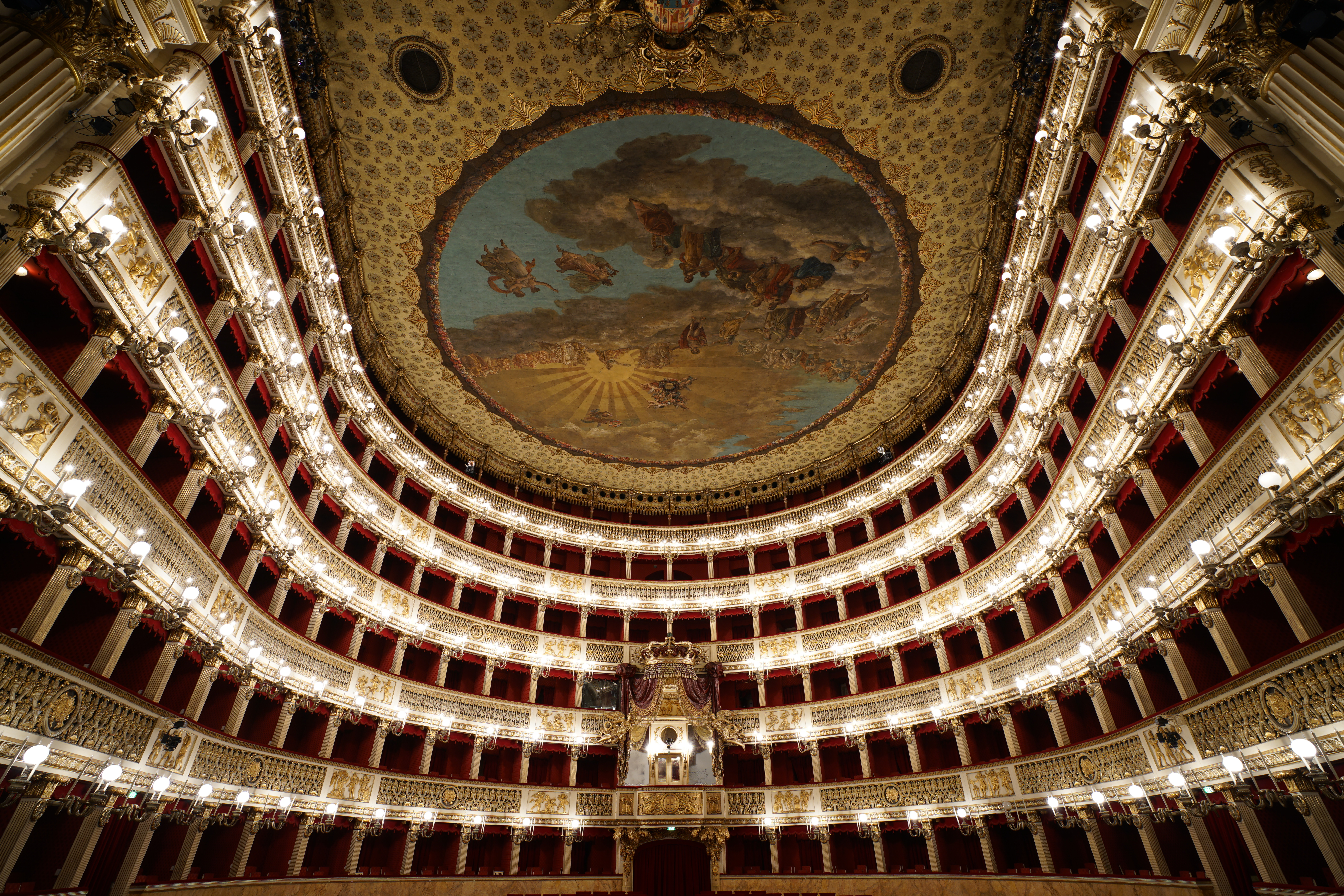|
Leonardo Leo
Leonardo Leo (5 August 1694 – 31 October 1744), more correctly Leonardo Ortensio Salvatore de Leo, was a Baroque composer. Biography Leo was born in San Vito degli Schiavoni (currently known as San Vito dei Normanni, province of Brindisi) in the Apulia region, then part of the Kingdom of Naples. He became a student at the Conservatorio della Pietà dei Turchini at Naples in 1703, and was a pupil first of Francesco Provenzale and later of Nicola Fago. It has been supposed that he was a pupil of Pitoni and Alessandro Scarlatti, but he could not possibly have studied with either of these composers, although he was undoubtedly influenced by their compositions. His earliest known work was a sacred drama, ''L'infedelta abbattuta'', performed by his fellow-students in 1712. In 1714 he produced, at the court theatre, an opera, ''Pisistrato'', which was much admired. He held various posts at the royal chapel, and continued to write for the stage, besides teaching at the conservator ... [...More Info...] [...Related Items...] OR: [Wikipedia] [Google] [Baidu] |
Baroque Music
Baroque music ( or ) refers to the period or dominant style of Western classical music composed from about 1600 to 1750. The Baroque style followed the Renaissance period, and was followed in turn by the Classical period after a short transition, the galant style. The Baroque period is divided into three major phases: early, middle, and late. Overlapping in time, they are conventionally dated from 1580 to 1650, from 1630 to 1700, and from 1680 to 1750. Baroque music forms a major portion of the "classical music" canon, and is now widely studied, performed, and listened to. The term "baroque" comes from the Portuguese word ''barroco'', meaning " misshapen pearl". The works of George Frideric Handel and Johann Sebastian Bach are considered the pinnacle of the Baroque period. Other key composers of the Baroque era include Claudio Monteverdi, Domenico Scarlatti, Alessandro Scarlatti, Antonio Vivaldi, Henry Purcell, Georg Philipp Telemann, Jean-Baptiste Lully, Jean-Philippe R ... [...More Info...] [...Related Items...] OR: [Wikipedia] [Google] [Baidu] |
Amor Vuol Sofferenza
''Amor vuol sofferenza'' is a 1739 commedia per musica in three acts by Leonardo Leo to a libretto by Antonio Federico Gennaro (d.1744). It was first performed at Naples, Teatro Nuovo. Leo was working on a revision to be entitled ''La finta Frascatana'' in 1744 when he died, which was completed by Matteo Capranica. Stefano Capone, Carmela Lombardi - L'opera comica napoletana (1709-1749) 2007 G.A. Federico, opera comica, Napoli, Teatro dei Fiorentini] 1739 - Amor vuol sofferenza ibr. G.A. Federico, opera comica, Napoli, Teatro Nuovo sopra Toledo1 740 - Alidoro ibr. ... Teatro dei Fiorentini1 744 - La finta frascatana bass, premiered by Gioacchino Corrado *Alessandro - young Romano, lover of Eugenia, the enamoured with Camilla, contralto Travesti (theatre), travesti, premiered by Antonia Colasanti *Camilla - innamorata di Ridolfo, soprano, premiered by Maddalena Frizzi *Vastarella - della villa di Portici, enamoured first with Mosca, then with Fazio, soprano, premiered by Margheri ... [...More Info...] [...Related Items...] OR: [Wikipedia] [Google] [Baidu] |
Teatro San Bartolomeo
Theatres for diverse musical and dramatic presentations began to open in Naples, Italy, in the mid-16th century as part of the general Spanish cultural and political expansion into the kingdom of Naples, which had just become a vicerealm of Spain. None of the early theaters still function as such, having been replaced by later facilities from the mid-18th century onwards. Neapolitan theatres first built in the 16th and 17th centuries include: Teatro della Commedia Vecchia Built around 1550, the Commedia Vecchia was the first public theatre in Naples. It was the professional home to acting troupes from Spain "playing the provinces," and it provided a stage for the improvised antics of the masked and costumed figures in the then innovative Italian commedia dell'arte. In its heyday, the theatre was so successful that the government put a tax on their proceeds to finance the Casa dei Incurabili, a home for people with incurable diseases. The theatre was acquired in 1587 by a consortium ... [...More Info...] [...Related Items...] OR: [Wikipedia] [Google] [Baidu] |
Novello & Co
Wise Music Group is a global music publisher, with headquarters in Berners Street, London. In February 2020, Wise Music Group changed its name from The Music Sales Group. In 2014 Wise Music Group (as The Music Sales Group) acquired French classical music publisher Éditions Alphonse Leduc. Éditions Alphonse Leduc publishes classical music by French composers including Jacques Ibert, Henri Dutilleux, Olivier Messiaen, Francis Poulenc, and Joseph Canteloube. It also publishes operatic works by Italian composers Gioachino Rossini and Vincenzo Bellini, and works by Muzio Clémenti, Johannes Brahms, and Pyotr Tchaikovsky. In March 2017, The Music Sales Group acquired disco publisher Bleu Blanc Rouge from Belgian record producer and songwriter Jean Kluger. In April 2018, Music Sales sold its physical and online print divisions, including Musicroom, to Milwaukee-based publisher Hal Leonard for $50 million. Hal Leonard will continue to distribute Wise Music's publishing catalogue wo ... [...More Info...] [...Related Items...] OR: [Wikipedia] [Google] [Baidu] |
Charles Villiers Stanford
Sir Charles Villiers Stanford (30 September 1852 – 29 March 1924) was an Anglo-Irish composer, music teacher, and conductor of the late Romantic music, Romantic era. Born to a well-off and highly musical family in Dublin, Stanford was educated at the University of Cambridge before studying music in University of Music and Theatre Leipzig, Leipzig and Berlin. He was instrumental in raising the status of the Cambridge University Musical Society, attracting international stars to perform with it. While still an undergraduate, Stanford was appointed organist of Trinity College, Cambridge. In 1882, aged 29, he was one of the founding professors of the Royal College of Music, where he taught composition for the rest of his life. From 1887 he was also Professor of Music (Cambridge), Professor of Music at Cambridge. As a teacher, Stanford was sceptical about modernism, and based his instruction chiefly on classical principles as exemplified in the music of Johannes Brahms, Brahms ... [...More Info...] [...Related Items...] OR: [Wikipedia] [Google] [Baidu] |
Giovanni Battista Pergolesi
Giovanni Battista Draghi (; 4 January 1710 – 16 or 17 March 1736), often referred to as Giovanni Battista Pergolesi (), was an Italian Baroque composer, violinist, and organist. His best-known works include his Stabat Mater and the opera ''La serva padrona'' (''The Maid Turned Mistress''). His compositions include operas and sacred music. He died of tuberculosis at the age of 26. Biography Born in Jesi in what is now the Province of Ancona (but was then part of the Papal States), he was commonly given the nickname "Pergolesi", a demonym indicating in Italian the residents of Pergola, Marche, the birthplace of his ancestors. He studied music in Jesi under a local musician, Francesco Santi, before going to Naples in 1725, where he studied under Gaetano Greco and Francesco Feo among others. On leaving the conservatory in 1731, he won some renown by performing the oratorio in two parts ' ("The Phoenix on the Pyre, or The Death of Saint Joseph"), and the ''dramma sacro'' in thre ... [...More Info...] [...Related Items...] OR: [Wikipedia] [Google] [Baidu] |
Francesco Durante
Francesco Durante (31 March 1684 – 30 September 1755) was a Neapolitan composer. Biography He was born at Frattamaggiore, in the Kingdom of Naples, and at an early age he entered the '' Conservatorio dei poveri di Gesù Cristo'', in Naples, where he received lessons from Gaetano Greco. Later he became a pupil of Alessandro Scarlatti at the Conservatorio di Sant'Onofrio. He is also supposed to have studied under Bernardo Pasquini and Giuseppe Ottavio Pitoni in Rome, but there is no documentary evidence. He is said to have succeeded Scarlatti in 1725 at '' Sant' Onofrio'', and to have remained there until 1742, when he succeeded Porpora as head of the Conservatorio di Santa Maria di Loreto, also in Naples. This post he held for thirteen years, till his death in Naples. He was married three times. His fame as a teacher was considerable, and Niccolò Jommelli, Giovanni Paisiello, Giovanni Battista Pergolesi, Niccolò Piccinni and Leonardo Vinci were amongst his pupils. As a tea ... [...More Info...] [...Related Items...] OR: [Wikipedia] [Google] [Baidu] |
Counterpoint
In music, counterpoint is the relationship between two or more musical lines (or voices) which are harmonically interdependent yet independent in rhythm and melodic contour. It has been most commonly identified in the European classical tradition, strongly developing during the Renaissance and in much of the common practice period, especially in the Baroque period. The term originates from the Latin ''punctus contra punctum'' meaning "point against point", i.e. "note against note". In Western pedagogy, counterpoint is taught through a system of species (see below). There are several different forms of counterpoint, including imitative counterpoint and free counterpoint. Imitative counterpoint involves the repetition of a main melodic idea across different vocal parts, with or without variation. Compositions written in free counterpoint often incorporate non-traditional harmonies and chords, chromaticism and dissonance. General principles The term "counterpoint" has been us ... [...More Info...] [...Related Items...] OR: [Wikipedia] [Google] [Baidu] |
Harmonic
A harmonic is a wave with a frequency that is a positive integer multiple of the ''fundamental frequency'', the frequency of the original periodic signal, such as a sinusoidal wave. The original signal is also called the ''1st harmonic'', the other harmonics are known as ''higher harmonics''. As all harmonics are periodic at the fundamental frequency, the sum of harmonics is also periodic at that frequency. The set of harmonics forms a '' harmonic series''. The term is employed in various disciplines, including music, physics, acoustics, electronic power transmission, radio technology, and other fields. For example, if the fundamental frequency is 50 Hz, a common AC power supply frequency, the frequencies of the first three higher harmonics are 100 Hz (2nd harmonic), 150 Hz (3rd harmonic), 200 Hz (4th harmonic) and any addition of waves with these frequencies is periodic at 50 Hz. In music, harmonics are used on string instruments and wind instrum ... [...More Info...] [...Related Items...] OR: [Wikipedia] [Google] [Baidu] |
Neapolitan School
In music history, the Neapolitan School is a group, associated with opera, of 17th and 18th-century composers who studied or worked in Naples, Italy,Don Michael Randel (2003). ''The Harvard Dictionary of Music'', p. 549. . the best known of whom is Alessandro Scarlatti, with whom "modern opera begins".Paul Henry Lang (1997). ''Music in Western Civilization'', p. 453. . Francesco Provenzale is generally considered the school's founder. The Neapolitan School has been considered in between the Roman School and the Venetian School in importance. However, "The concept of Neapolitan school, or more particularly Neapolitan opera, has been questioned by a number of scholars. That Naples was a significant musical center in the 18th century is beyond doubt. Whether the composers working in Naples at that time developed or partook of a distinct and characteristic musical style is less clear" since so little is known about the repertory. Member *Pietro Marchitelli (1643 -1729) *Francesco P ... [...More Info...] [...Related Items...] OR: [Wikipedia] [Google] [Baidu] |
Apoplexy
Apoplexy () is rupture of an internal organ and the accompanying symptoms. The term formerly referred to what is now called a stroke. Nowadays, health care professionals do not use the term, but instead specify the anatomic location of the bleeding, such as cerebral, ovarian or pituitary. Informally or metaphorically, the term ''apoplexy'' is associated with being furious, especially as "apoplectic". Historical meaning From the late 14th to the late 19th century,''OED Online'', 2010, Oxford University Press. 7 February 2011 ''apoplexy'' referred to any sudden death that began with a sudden loss of consciousness, especially one in which the victim died within a matter of seconds after losing consciousness. The word ''apoplexy'' was sometimes used to refer to the symptom of sudden loss of consciousness immediately preceding death. Ruptured aortic aneurysms, and even heart attacks and strokes were referred to as apoplexy in the past, because before the advent of medical science, the ... [...More Info...] [...Related Items...] OR: [Wikipedia] [Google] [Baidu] |
L'Olimpiade
''L'Olimpiade'' is an opera libretto in three acts by Metastasio originally written for an operatic setting by Antonio Caldara of 1733. Metastasio’s plot vaguely draws upon the narrative of "The Trial of the Suitors" provided from Book 6 of '' The Histories'' of Herodotus, which had previously been the base for Apostolo Zeno's libretto ''Gli inganni felici'' (1695). The story, set in Ancient Greece at the time of the Olympic Games, is about amorous rivalry and characters' taking places to gain the loved one. The story ends with the announcement of two marriages. Background Metastasio, as Imperial court poet at the court of Vienna, was requested to write the libretto to help celebrate the birthday of Empress Elisabeth Christine of Brunswick-Wolfenbüttel in 1733. The court composer Caldara was assigned to compose the music. The libretto attracted attention immediately and productions were soon mounted across Europe. Metastasio himself commented to Saverio Mattei that ''L’Oli ... [...More Info...] [...Related Items...] OR: [Wikipedia] [Google] [Baidu] |









_GB_-_Title_page.jpg)